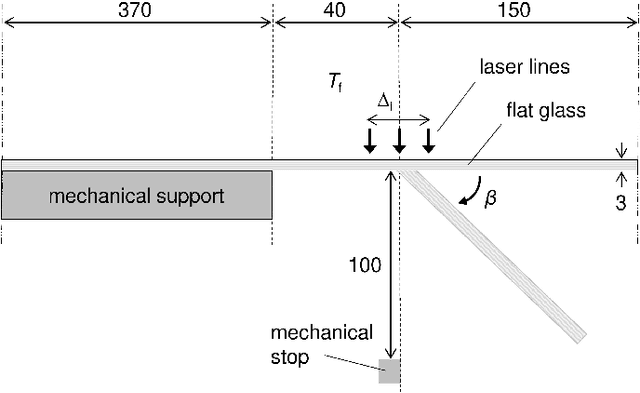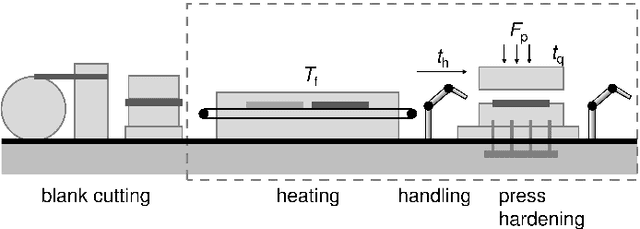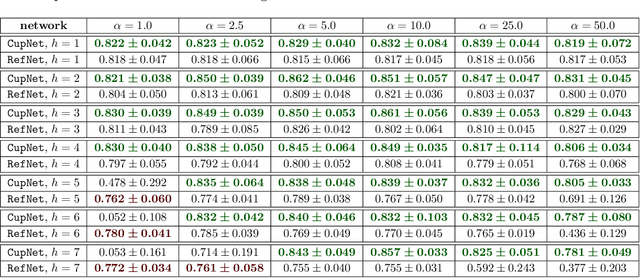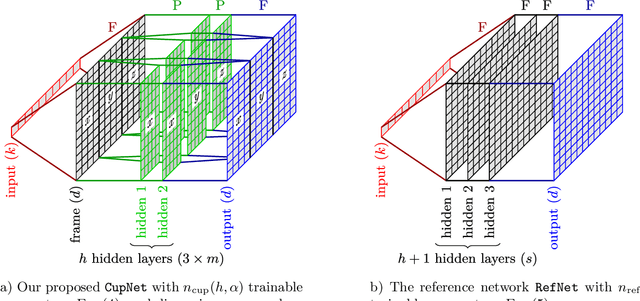Lukas Morand
Machine learning for structure-guided materials and process design
Dec 22, 2023Abstract:In recent years, there has been a growing interest in accelerated materials innovation in both, research and industry. However, to truly add value to the development of new advanced materials, it is inevitable to take into account manufacturing processes and thereby tailor materials design approaches to support downstream process design approaches. As a major step into this direction, we present a holistic optimization approach that covers the entire materials process-structure-property chain. Our approach specifically employs machine learning techniques to address two critical identification problems. The first is to solve a materials design problem, which involves identifying near-optimal material structures that exhibit desired macroscopic properties. The second is to solve a process design problem that is to find an optimal processing path to manufacture these material structures. Both identification problems are typically ill-posed, which presents a significant challenge for solution approaches. However, the non-unique nature of these problems also offers an important advantage for processing: By having several target structures that perform similarly well, the corresponding processes can be efficiently guided towards manufacturing the best reachable structure. In particular, we apply deep reinforcement learning for process design in combination with a multi-task learning-based optimization approach for materials design. The functionality of the approach will be demonstrated by using it to manufacture crystallographic textures with desired properties in a metal forming process.
A multi-task learning-based optimization approach for finding diverse sets of material microstructures with desired properties and its application to texture optimization
Oct 27, 2021



Abstract:The optimization along the chain processing-structure-properties-performance is one of the core objectives in data-driven materials science. In this sense, processes are supposed to manufacture workpieces with targeted material microstructures. These microstructures are defined by the material properties of interest and identifying them is a question of materials design. In the present paper, we addresse this issue and introduce a generic multi-task learning-based optimization approach. The approach enables the identification of sets of highly diverse microstructures for given desired properties and corresponding tolerances. Basically, the approach consists of an optimization algorithm that interacts with a machine learning model that combines multi-task learning with siamese neural networks. The resulting model (1) relates microstructures and properties, (2) estimates the likelihood of a microstructure of being producible, and (3) performs a distance preserving microstructure feature extraction in order to generate a lower dimensional latent feature space to enable efficient optimization. The proposed approach is applied on a crystallographic texture optimization problem for rolled steel sheets given desired properties.
Compensating data shortages in manufacturing with monotonicity knowledge
Oct 29, 2020



Abstract:We present a regression method for enhancing the predictive power of a model by exploiting expert knowledge in the form of shape constraints, or more specifically, monotonicity constraints. Incorporating such information is particularly useful when the available data sets are small or do not cover the entire input space, as is often the case in manufacturing applications. We set up the regression subject to the considered monotonicity constraints as a semi-infinite optimization problem, and we propose an adaptive solution algorithm. The method is conceptually simple, applicable in multiple dimensions and can be extended to more general shape constraints. It is tested and validated on two real-world manufacturing processes, namely laser glass bending and press hardening of sheet metal. It is found that the resulting models both comply well with the expert's monotonicity knowledge and predict the training data accurately. The suggested approach leads to lower root-mean-squared errors than comparative methods from the literature for the sparse data sets considered in this work.
Structure-Guided Processing Path Optimization with Deep Reinforcement Learning
Sep 21, 2020



Abstract:A major goal of material design is the inverse optimization of processing-structure-property relationships. In this paper, we propose and investigate a deep reinforcement learning approach for the optimization of processing paths. The goal is to find optimal processing paths in the material structure space that lead to target structures, which have been identified beforehand to yield desired material properties. The contribution completes the desired inversion of the processing-structure-property chain in a flexible and generic way. As the relation between properties and structures is generally nonunique, typically a whole set of goal structures can be identified, that lead to desired properties. Our proposed method optimizes processing paths from a start structure to one of the equivalent goal-structures. The algorithm learns to find near-optimal paths by interacting with the structure-generating process. It is guided by structure descriptors as process state features and a reward signal, which is formulated based on a distance function in the structure space. The model-free reinforcement learning algorithm learns through trial and error while interacting with the process and does not rely on a priori sampled processing data. We instantiate and evaluate the proposed method by optimizing paths of a generic metal forming process to reach near-optimal structures, which are represented by one-point statistics of crystallographic textures.
CupNet -- Pruning a network for geometric data
May 11, 2020


Abstract:Using data from a simulated cup drawing process, we demonstrate how the inherent geometrical structure of cup meshes can be used to effectively prune an artificial neural network in a straightforward way.
The Good, the Bad and the Ugly: Augmenting a black-box model with expert knowledge
Jul 24, 2019

Abstract:We address a non-unique parameter fitting problem in the context of material science. In particular, we propose to resolve ambiguities in parameter space by augmenting a black-box artificial neural network (ANN) model with two different levels of expert knowledge and benchmark them against a pure black-box model.
 Add to Chrome
Add to Chrome Add to Firefox
Add to Firefox Add to Edge
Add to Edge